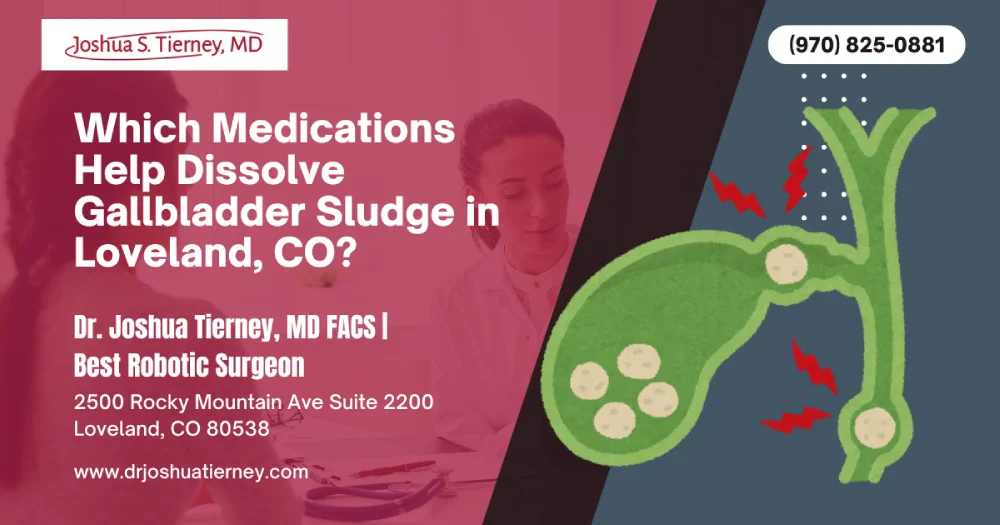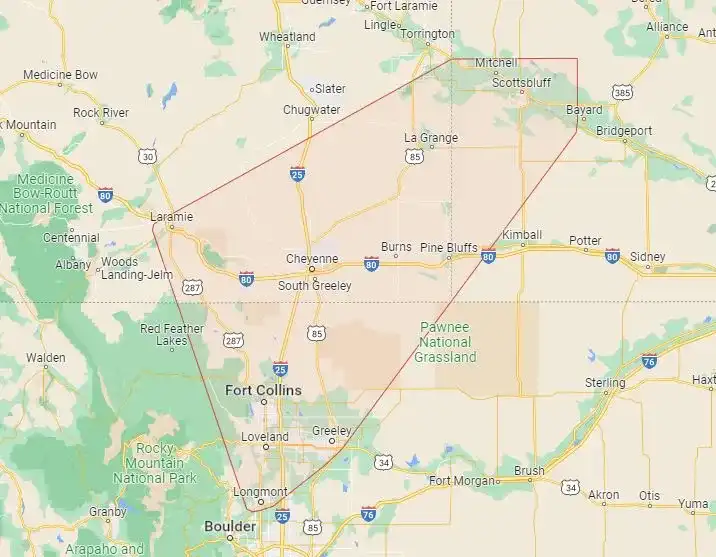Pancreatic problems often hide in plain sight, and the faster you recognize them, the sooner you can schedule an appointment with a pancreatic surgeon, internist in Loveland, or GI specialist for targeted care. Pancreatic diseases—ranging from acute or chronic pancreatitis to pancreatic cancer and biliary diseases—can begin with vague symptoms like nausea or bloating before escalating into severe upper-abdominal pain, jaundice, or unexplained weight loss.
Living in Loveland adds altitude, lifestyle, and local healthcare resources to the equation. Below is a guide to help you spot red flags, understand regional considerations, and find the right treatment pathway.
Key Takeaways
- Severe, persistent pain in the upper abdomen that radiates to the back is the hallmark of an inflamed pancreas and must be assessed quickly by the best acute pancreatitis doctors in Northern Colorado.
- Nausea, vomiting, and loss of appetite may worsen at 4,982 feet elevation; monitor hydration and electrolyte intake.
- Unexplained weight loss, oily stools, or new-onset diabetes can indicate chronic pancreatitis or pancreatic adenocarcinoma—Loveland residents should request a CT scan or MRI without delay.
- Jaundice—yellowing of the skin or eyes— signals possible narrowing of the bile duct from a tumor or gallstone; head straight to UCHealth Longs Peak Hospital or Medical Center of the Rockies for imaging.
- Several risk factors—smoking, family history, high-fat diet, and alcohol use—compound at altitude; early screening through an internist in Loveland is crucial.
- Top-rated resources include UCHealth Longs Peak Hospital, Banner Health, and general surgery practices that offer minimally invasive options for the head or tail of the pancreas.
Anatomy of the Pancreas: Why Location Matters
The pancreas has three main regions: the head, body, and tail. Tumors or inflammation in the head of the pancreas frequently compress the common bile duct, causing earlier jaundice. Lesions in the tail of the pancreas may grow silently until they affect nearby bowel loops or organs. Understanding where pain or swelling sits within the pancreas helps your provider tailor imaging and potential surgery in Loveland.
Pancreatic Duct & Biliary Crossroads
The pancreatic duct meets the bile duct at the ampulla of Vater, so biliary diseases often present alongside pancreatic diseases. A CT scan or MRCP can reveal stones, strictures, or pancreatic cysts that block normal digestive enzyme flow, damaging the functional digestive system.
Types of Pancreatic Diseases Seen in Loveland
Acute Pancreatitis
Binge drinking, gallstones, or high triglycerides can spark inflammation of the pancreas within hours. The pain is sharp, wrapping around to the back, and can lead to organ failure if untreated. Loveland’s best doctors for acute pancreatitis use aggressive IV fluids, careful electrolyte monitoring, and sometimes ERCP to remove obstructing stones.
Pancreatitis can cause systemic complications, including ARDS and kidney injury; rapid transfer to an ICU with top-rated US News doctors improves survival.
Chronic Pancreatitis
Chronic pancreatitis results from repeated injury to cells in the pancreas, leading to scarring, pancreatic duct blockage, and enzyme shortage. Symptoms include:
- Steatorrhea (greasy, foul stools)
- Weight loss despite normal eating
- Vitamin A, D, E, K deficiencies
Management involves enzyme replacement, a low-fat diet, and sometimes minimally invasive surgery in Loveland to widen ducts or remove calcifications.
Pancreatic Cancer
The most common type of pancreatic cancer is pancreatic adenocarcinoma, a tumor arising from exocrine cells. Other types of pancreatic cancer include neuroendocrine tumors and cystic neoplasms. Early-stage disease may mimic peptic ulcers or irritable bowel issues, so never ignore persistent pain or indigestion.
Risk factor highlights:
- Smoking doubles risk.
- Genetic syndromes (BRCA, Lynch) elevate odds.
- Chronic pancreatitis raises lifetime pancreatic cancer risk to 4–7%.
Treatment for pancreatic cancer varies: Whipple procedure for head lesions, distal pancreatectomy for tail disease, plus chemo (FOLFIRINOX or gemcitabine/nab-paclitaxel) and, in select cases, radiation. Loveland residents often undergo staging at UCHealth Longs Peak Hospital, then follow-up chemotherapy closer to home.
Pancreatic Cysts
Incidental cysts discovered on CT scan should always be discussed with a pancreatic surgeon. Some cysts carry malignant potential and require surveillance or removal.
Understanding Symptoms at a Glance
| Symptom | Possible Condition | Urgency Level | First Step in Loveland |
| Sharp post-meal pain | Acute pancreatitis | High | ER at Medical Center of the Rockies |
| Gradual weight loss + oily stool | Chronic pancreatitis | Moderate | Schedule an appointment with GI |
| Jaundice & dark urine | Biliary obstruction / cancer | Critical | Same-day imaging |
| New diabetes + dull pain | Early pancreatic cancer | High | Referral to oncology surgeon |
| Bloating, nausea after fatty food | Gallstone pancreatitis | High | Ultrasound & labs |
Why Location Matters When Spotting Pancreatic Symptoms in Loveland, CO
Environmental and Altitude Factors
At higher altitude, dehydration occurs faster, concentrating pancreatic enzymes and worsening inflammation. Be sure to drink at least 2–3 liters daily—especially while hiking Devil’s Backbone or fishing at Boyd Lake.
Local Healthcare Resources
- UCHealth Longs Peak Hospital: 24/7 CT scan, EUS twice weekly, access to top pancreatic surgeon partners.
- Banner Health: Same-day labs and general surgery consults for biliary diseases.
- Telehealth with Denver-based oncologists eliminates long drives during chemo.
Bowel and Digestive Clues You Shouldn’t Ignore
The bowel often reacts to pancreatic disease. Persistent diarrhea, constipation alternating with loose stools, or visible fat droplets in the toilet bowl signal malabsorption. Pancreatic enzymes in prescription form (lipase, amylase, protease) can restore a functional digestive system, but only if the underlying pancreatic duct issue is caught early.
Diagnostic Pathway in Northern Colorado
- Lab Panel: Amylase, lipase, liver enzymes, CA 19-9, blood sugar.
- Imaging: Ultrasound for gallstones; multiphase CT scan to view pancreas and bowel loops.
- Endoscopic Ultrasound (EUS): Detects tumors <2 cm within the pancreas, allows fine-needle biopsy.
- MRI/MRCP: Clarifies pancreatic cysts and narrowing of the bile duct.
Most insurance plans approve these tests when symptoms of pancreatic cancer or chronic pancreatitis are documented by your internist in Loveland.
Treatment Options: From Medication to Minimally Invasive Surgery
Medical Therapies
- IV fluids and pain control for acute episodes
- Pancreatic enzymes and fat-soluble vitamins for chronic disease
- Insulin for diabetes due to cell loss within the pancreas
Endoscopic Procedures
ERCP can remove stones, stretch strictures, or place stents across narrowed ducts, often avoiding open surgery.
Surgical Treatments
- Whipple Procedure (Pancreaticoduodenectomy): Complex but curative for cancers in the head of the pancreas.
- Distal Pancreatectomy: Removes tail lesions and often includes spleen.
- Total Pancreatectomy: Rare but considered when multiple benign cysts or widespread tumors exist.
Loveland hospitals increasingly offer laparoscopic or robot-assisted, minimally invasive techniques, reducing pain and shortening hospital stays to 4–6 days.
Preventive Strategies: Lower Your Risk Factor Load
- Quit smoking—join Colorado QuitLine for counseling.
- Limit alcohol—two drinks/week max if you have pancreatitis history.
- Adopt a Mediterranean style diet, lean on fruits, veggies, and fish.
- Exercise 150 minutes per week to maintain healthy BMI.
- Discuss genetic testing if you have two or more relatives with pancreatic or other GI cancers.
Red Flags That Require Immediate Care
- Pain unrelieved by OTC antacids or lying forward
- Jaundice plus fever (possible ascending cholangitis)
- Persistent vomiting or inability to keep fluids down
- Oily stools with rapid weight loss >5 lbs/month
- Sudden blood sugar spike in adults over 50 without prior diabetes history
If any appear, schedule an appointment or head to the ER—seconds matter when the pancreas is involved.
Support Resources & Follow-Up in Loveland
- Colorado Pancreas Support Group – Monthly meetings at McKee Conference Center.
- UCHealth Nutrition Services – Custom meal plans for enzyme insufficiency.
- Oncology Social Workers – Navigate insurance, travel, and second opinions.
Regular follow-ups include repeat CT scans every 3–6 months for cancer patients and yearly EUS for high-risk pancreatic cysts.
Conclusion
Pancreatic diseases can easily be mistaken for common tummy troubles—until significant damage is done. Knowing the symptoms, understanding local risk factors, and turning to trusted resources like Longs Peak Hospital’s imaging suites and Loveland’s minimally invasive surgery teams can make all the difference. When symptoms like upper-abdominal pain, jaundice, or unexplained bowel changes appear, don’t wait.
Experts like Dr. Joshua Tierney specialize in diagnosing and treating pancreatic conditions early, helping preserve pancreas function—and save lives. Stay hydrated, monitor abdominal changes, and seek expert help without delay.
Frequently Asked Questions
What foods should I avoid if I have chronic pancreatitis?
Patients with chronic pancreatitis should limit high-fat meals, fried foods, and processed snacks that overload pancreatic enzymes. Emphasize lean protein, steamed vegetables, and whole grains. Keep fat below 20 g per meal, and discuss a personalized diet with a registered dietitian at UCHealth to reduce flare-ups.
How does altitude in Loveland affect pancreatic recovery?
Higher altitude can increase dehydration, thickening pancreatic secretions and worsening inflammation. Post-surgery or during a pancreatitis flare, aim for 2–3 L of fluids daily, incorporate electrolyte drinks, and monitor urine color. If nausea limits intake, seek IV hydration at a local clinic.
Can pancreatic cysts become cancerous?
Yes. Certain cysts—like mucinous cystic neoplasms or IPMNs—carry malignant potential. Regular MRI or EUS helps assess size, duct involvement, and mural nodules. Surgical removal may be advised by a pancreatic surgeon when cysts exceed 3 cm or show worrisome features.
Are minimally invasive pancreatic surgeries as effective as open procedures?
For select tumors and benign lesions, laparoscopic or robotic distal pancreatectomy offers equal oncologic outcomes with reduced pain and shorter hospital stay. However, complex operations like the Whipple may still require open techniques. Discuss options with a top-rated general surgery team.
What is the role of pancreatic enzymes after surgery?
After partial pancreatectomy, enzyme production can drop, leading to malabsorption. Prescription pancreatic enzymes taken with meals help digest fats and proteins, preventing weight loss and nutrient deficiencies. Dosage is tailored based on stool consistency and dietary fat load.
Does new-onset diabetes always suggest pancreatic cancer?
Not always, but adults over 50 who develop sudden diabetes—especially with weight loss or abdominal pain—should undergo imaging. Diabetes can arise from chronic pancreatitis or benign cysts, yet it may also be an early clue to pancreatic adenocarcinoma.
How often should high-risk individuals get screened?
Those with strong family history or genetic mutations (BRCA2, CDKN2A) may start annual EUS or MRI at age 40, or ten years younger than the earliest cancer in the family. Screening should be coordinated through a multidisciplinary GI cancer clinic.
What is the survival rate for pancreatic cancer detected early?
Localized tumors confined to the pancreas have a 5-year survival approaching 40% when resected. Unfortunately, most cases present late. Early imaging for vague symptoms—especially in high-risk Loveland residents—can dramatically improve outcomes.
Can pancreatitis cause bowel obstruction?
Yes. Swelling in the head of the pancreas can compress the duodenum, leading to vomiting and inability to tolerate oral intake. CT scan helps differentiate simple ileus from true obstruction, guiding timely surgical or endoscopic intervention.
Where can I find support during chemotherapy in Loveland?
UCHealth offers infusion centers with oncology nurse navigators, social workers, and dietitians under one roof. Virtual support groups connect you with other patients managing treatment for pancreatic cancer and share tips for side-effect relief and mental well-being.









